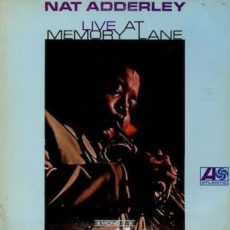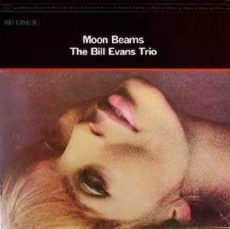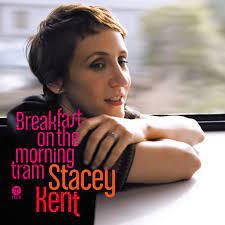
Requisites
Live at Memory Lane ~ Nat Adderley | By Eddie Carter
This morning’s choice from the library is one of my favorite records that always takes me back to my childhood each time it’s on the turntable. Live at Memory Lane (Atlantic 1474/SD 1474) by Nat Adderley is a 1966 release recorded on Halloween night before an enthusiastic audience. Nat is featured on trumpet exclusively with a stellar supporting cast including his brother Cannonball’s rhythm section. Joe Henderson (tracks: A2 to B3) on tenor sax, Joe Zawinul on piano, Victor Gaskin on bass, and Roy McCurdy on drums complete the ensemble. I was thirteen when I first heard it at Record Rendezvous in Cleveland, Ohio and it still delivers all treats and no tricks. My copy used in this report is the original US Mono album.
Side One starts with On My Journey Now, an original by Nat Adderley endowed with the spirit of a sanctified church song. The leader kicks off the melody with a lively energy advancing to an uplifting opening statement. Zawinul follows with an extremely funky performance that’s sure to get your foot stomping to the rhythm section’s contagious beat preceding Nat leading the congregation out. Adderley’s second composition, Fun, is exactly that. It first appeared on Mercy, Mercy, Mercy (1967) with the trio anchoring both brothers. The group heats up the opening chorus, then Joe steps up first to cook with a fiery passion. Nat speaks with bright and brassy enthusiasm next. Zawinul follows with a feisty attack on the closer before the ensemble’s theme comes to a standstill.
Good Old Summertime by George Evans and Ren Shields is a pretty song from Tin Pan Alley. Nat begins the mid tempo melody on mute accompanied by the trio, then continues floating like a cloud over a picturesque landscape with a discretely rich tone. Henderson is equally enchanting on the second statement, and Joe unfolds a simply gorgeous interpretation ahead of Nat’s tender muted climax. Side Two opens with the first of two from Joe Zawinul’s pen, Lavender Woman. Nat begins with a brief introduction, then picks up the pace for the ensemble’s theme. Henderson takes the lead and swings adventurously. Adderley comes after him and perks up our ears on the second solo. Zawinul soars to great heights on an imaginatively conceived and executed finale into the theme’s return.
Painted Desert is simply breathtaking in its lyrical beauty and the ensemble opens with a gorgeous theme. Henderson is in the spotlight first and delivers an exquisitely beautiful reading. Adderley takes the reins next for an emotionally charged interpretation. Zawinul approaches the finish line with a degree of sensitivity that segues into a vivacious presentation, then the quintet reassembles for a final word. Theme by Nat Adderley and Joe Zawinul brings the set and album to an upbeat close. The group takes off on the opening chorus and Henderson, Adderley, and Gaskin (in his only solo) each take a turn to cook. Nat adds the exclamation mark by acknowledging his bandmates and thanking the audience during the closing chorus.
Nesuhi Ertegun supervised Live at Memory Lane and Wally Heider was the recording engineer for the ensemble’s performance. The sound quality is excellent for a fifty-five-year-old release surrounding your sweet spot with great music that’s a fantastic listen. This was Nat’s first live album leading his own group and I wish he’d recorded more as a leader. The quintet swings like crazy with superb musicianship that makes the listener feel he or she is part of the audience enjoying the music. If you’re a fan of live jazz, just becoming acquainted with the music of Nat Adderley, or only know of his work with Cannonball, I invite you to check out Live at Memory Lane on your next viny hunt. It’s a thoroughly enjoyable album deserving of reaching a wider audience!
~ Mercy, Mercy, Mercy (Capitol Records T 2663/ST 2663) – Source: Discogs.com ~ In The Good Old Summertime – Source: Wikipedia.org © 2022 by Edward Thomas Carter
More Posts: choice,classic,collectible,collector,history,instrumental,jazz,music,trumpet

The Quarantined Jazz Voyager
Not belaboring the point, with all that is going on in the world, I am continuing to remain ever vigilant relative to the pandemic which is ever present in our lives. I can only hope you are doing the same.
My latest offering for those who enjoy good music comes from Moon Beams, a 1962 album by pianist Bill Evans. It is the first trio album recorded by Evans after the death of Scott LaFaro.
Bassist Chuck Israels replaced LaFaro and Evans recorded several songs on May 17, 1962 (#5,9), May 29, 1962 (#1, 8), June 2, 1962 (#2-4, 6-7) and June 5, 1962 (#10-11) at Sound Makers Studio, New York City. The album was released in December 1962 on the Riverside label and is a collection of ballads recorded during this period.
The recording sessions were produced by Orrin Keepnews, the woman on the album cover is Nico, who would later achieve recognition as a musical artist herself, the photographer was Peter Sahula and the cover design was by Ken Deardorff.
Track Listing: 39:00- Re: Person I Knew (Bill Evans) ~ 5:44
- Polka Dots and Moonbeams (Johnny Burke, Jimmy Van Heusen) ~ 5:01
- I Fall in Love Too Easily (Sammy Cahn, Jule Styne) ~ 2:42
- Stairway to the Stars (Matty Malneck, Mitchell Parish) ~ 4:53
- If You Could See Me Now (Tadd Dameron) ~ 4:29
- It Might as Well Be Spring (Richard Rodgers, Oscar Hammerstein II) ~ 6:05
- In Love in Vain (Leo Robin, Jerome Kern) ~ 5:00
- Very Early (Bill Evans) ~ 5:06
- Bill Evans – piano
- Chuck Israels – bass
- Paul Motian – drums
More Posts: adventure,album,club,genius,jazz,museum,music,piano,preserving,restaurant,travel

Daily Dose Of Jazz…
Tina May was born March 30, 1961 in Gloucester, England. She lived in Frampton-on-Severn when she was young and attended Stroud High School.
She has recorded twenty-five albums as a leader and three as a guest artist, of which18 albums are on the 33 Records label. She has worked with Tony Coe, Nikki Iles, Stan Sulzmann, Ray Bryant, Enrico Pieranunzi and Patrick Villanueva.
In 1989 she married jazz drummer and bandleader Clark Tracey and recorded several albums with him in the 1990s. Vocalist Tina May continues to perform, record and explore the azz idiom.
More Posts: bandleader,history,instrumental,jazz,music,vocal

Daily Dose Of Jazz…
Stacey Kent was born March 27, 1965 in South Orange, New Jersey. After graduating from Sarah Lawrence College, she crossed the pond to study music at the Guildhall School of Music and Drama in London, England where she met and married saxophonist Jim Tomlinson.
In the 1990s, she began her professional career singing at Café Bohème in London’s Soho. After two or three years, she began opening for established acts at Ronnie Scott’s Jazz Club in London. By 1995, she appeared in the film Richard III singing Come Live with Me and Be My Love. Her debut album, Close Your Eyes, was released in 1997.
In 2020, Kent released a series of singles and EPs, including “Christmas in the Rockies”, “Three Little Birds”, “Lovely Day”, “Landslide”, “I Wish I Could Go Travelling Again”, “Bonita” and “Craigie Burn” as a duet with her longtime pianist Art Hirahara. Several of these singles become part of an album released on Sept 17, 2021, called “Songs From Other Places.”
She has received several awards and honors including receiving the Chevalier dans l’Ordre des Arts et des Lettres (Order of Arts and Letters) in 2009. Grammy-nominated vocalist Stacey Kent has recorded nearly two dozen albums and continues to explore the realm of her music.
More Posts: bandleader,history,instrumental,jazz,music,vocal

Requisites
Battle Stations ~ Eddie “Lockjaw” Davis & Johnny Griffin | By Eddie Carter
It happened like this; that same night after I listened to The Happy Blues, I decided to turn up the heat with my next selection. That’s what prompted this morning’s choice from the library by tenor saxophonists, Eddie “Lockjaw” Davis and Johnny Griffin. Battle Stations (Prestige PRLP 7282/PRST 7282), hit the stores in 1963 and both horns are anchored by a smokin’ rhythm section, Norman Simmons on piano, Vic Sproles on bass, and Ben Riley on drums. My copy used in this report is the 1993 Japanese Mono reissue (Prestige VIJJ-30008 – PRLP 7282) by Victor Musical Industries.
Side One takes off at a fast clip on What’s Happening by Fletcher Henderson. The quintet speeds through the melody collectively, then Eddie erupts into an energetic opening statement. Norman steps up next with a spirited performance, then Johnny wails for a bit on the third reading. Both saxes move with considerable agility on a vigorous exchange into the quintet’s speedy ending. Abundance by Norman Connors slows the group’s pace just a few notches with a soulful melody in unison. “Lockjaw” goes first and gives a charming performance. Connors takes the reins next for an easy, flowing solo and Griff extends the mood on the finale with a satisfying statement succeeded by the ensemble’s reprise and climax.
If I Had You by Jimmy Campbell, Reginald Connelly and Ted Shapiro is up next. “Lockjaw” leads the rhythm section at a relaxing tempo on the melody and exhibits a simple beauty in the opening chorus. Norman is simply enchanting on the second reading. Johnny adds a delightful depth of emotion to the closing solo complemented by Vic and Ben’s supplement. Johnny Griffin’s 63rd Street Theme begins Side Two at mid tempo with a Latin flavor established by the rhythm section’s introduction and ensemble’s opening chorus. Davis approaches the lead solo with unhurried pacing and inspired lines. Connors packs plenty of feeling into the second presentation, then Griff is very smooth on the closing statement preceding the finale.
Pull My Coat by Richard Evans is a blues that comes to life with a brief bass introduction by Vic preceding the ensemble’s collective theme. Eddie opens anchored by just bass and drums, segueing into a splendid performance with full rhythm. Norman moves leisurely into the second solo with some down-home cooking. Johnny serves some succulent soul food on the closer. The quintet ends the set with a fun original by Babs Gonzales and James Moody, Hey Jim! Connors and the rhythm section opens with a happy introduction that grows into the ensemble’s unison theme. “Lockjaw” gives the first solo some swinging excitement, then Connors rises to the occasion on the second solo. Griffin follows with a perfectly executed statement, then both horns share a final exchange ahead of the group’s exit.
Battle Stations was produced by Esmond Edwards and Rudy Van Gelder was the man behind the dials of the original album. Victor Musical Industries has done a very good job with the remastering of this reissue. The album has an exquisite soundstage through the treble, midrange, and bass that’s excellent. Griff and “Lockjaw” were brilliant when working together and they’ve recorded several great studio and live albums. If you’re in the mood for some swinging Hard-Bop and are a fan of Eddie “Lockjaw” Davis and Johnny Griffin, I invite you to audition Battle Stations for a spot in your jazz library. It’s forty-two minutes of great music from one of the great tenor sax partnerships that’s sure to become one of your favorites!
~ If I Had You – Source: JazzStandards.com © 2022 by Edward Thomas Carter
More Posts: choice,classic,collectible,collector,history,instrumental,jazz,music,saxophone



